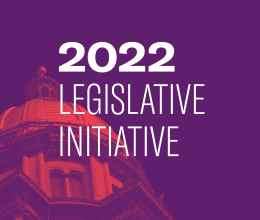African American and Latino neighborhoods -- largely on Chicago's West and South sides -- continue to suffer inequitable police services, according to new data obtained by the American Civil Liberties Union of Illinois through Freedom of Information Act requests to the City. The data shows that as a result of a disparate system of deploying police officers across the city -- over-deploying police in predominantly white neighborhoods -- African American and Latino neighborhoods wait much longer for a police officer to be dispatched after an emergency 911 call, have fewer officers assigned to minority districts for each emergency call than predominantly white neighborhoods and that minority neighborhoods continue to have more violent crimes per officer than white neighborhoods.
Nearly three years ago, the ACLU of Illinois and the Central Austin Neighborhood Association (CANA) filed a lawsuit challenging the City's scheme for police deployment, asserting that police officers are over-deployed in majority white communities, while neighborhoods of color have fewer police to respond to violent crimes and emergency calls for service. The disparity in deployment has been well-document in recent years. For example, communities of color regularly experience situations when no police officer is available to respond to a 9-1-1 emergency call, a situation rare in majority white neighborhoods.
Last week, the ACLU and CANA filed a motion requesting that the Cook County Circuit Court allow pretrial discovery to go forward in their lawsuit. The groups believe that the data released today shows that nothing that the Emanuel administration has done in reshuffling police officers and districts has had a meaningful effect on reducing the inequities in police deployment. CANA and ACLU believe that discovery in the case will lift the shroud of secrecy and provide the transparency about the way in which Chicago deploys police officers and the impact on the City's neighborhoods.
"Little is more important to most residents of Chicago than the level of police protection and responsiveness by police to cries of help from the various neighborhoods," said Harvey Grossman, legal director for the ACLU of Illinois. "Unfortunately, despite regular public pronouncements about advancements in fighting violent crime, the City has continued to deploy officers in an inequitable manner and has maintained a shroud of secrecy over the basis for their deployment of police.
The new data released today comes to the ACLU of Illinois through a series of Freedom of Information Act (FOIA) requests to the City. This new data shows a broad disparity in response time to “Priority 1” emergency calls across various police districts in Chicago. Priority 1 calls, the most serious of all 9-1-1 calls, are those that involve an imminent threat to life, bodily injury or major property damage/loss. The disparity includes the amount of time necessary to dispatch a police officer after the Office of Emergency Management and Communications (OEMC) receives an emergency call. The City refuses to release the additional time periods between dispatch of the officers and time of arrival at the scene of the call.
For example, in July of 2013, residents in Grand Crossing, a minority neighborhood, waited an average of 11 minutes (10:41) for an officer to be dispatched in response to a Priority 1 call; by contrast, residents in Jefferson Park, a predominantly white neighborhood, had an average wait time of less than 2.5 minutes (2:26). The dispatch time was nearly 4.5 times longer in this minority district. Across all districts, the average dispatch time in minority districts for the month was approximately twice as long (1.8) as in minority districts for Priority 1 calls.
Likewise, nearly all of the predominantly minority districts had more Priority 1 calls per officer when compared to white neighborhoods, which largely explains the continuing disparity in response times. Beat officers in minority districts have approximately 1.5 times more Priority 1 calls than beat officers in white districts. When special unit officers are included, the disparity is still 1.4 times greater. For example, the minority district of Grand Crossing had 2.6 times more Priority 1 calls per beat officer in September (23.7 calls) than officers in the white district of Lincoln/Foster (9.1 calls).
The ACLU obtained data also finds that African American and Latino neighborhoods also experience more violent crimes, resulting in more urgent emergency calls, with comparatively fewer officers assigned on a daily basis. For example, during September 2013, violent crimes per beat officer in minority districts were approximately 2.35 times greater than the same metric in white districts. Even when additional officers from the Violence Reduction Initiative and Area Saturation Teams (who we understand are generally not assigned to 911 calls) are included, the violent crime per officer in minority districts is approximately two times greater than in white districts. The greatest disparity is a factor of 4.3 found in comparing minority district Gresham to white district Lincoln/Foster.
"These are precisely the type of disparity in response that we identified when we filed this case in 2011," observed the ACLU's Grossman. "Our clients in Austin have reported countless incidents when they phone police in response to an act of violence in their community, only to wait without any response. We need to move this matter forward."
"Still, the City has resisted disclosure of information that would help us -- and the public -- get a full understanding of its deployment of police officers across the City," added Grossman.
The Circuit Court previously dismissed the case based on the City’s argument that the question of deployment was "political question" that only elected officials could resolve. An appellate court late last year rejected that view and reinstated the case. The motion by CANA and the ACLU to open discovery in the case will be heard by Circuit Judge Neil Cohen on April 8, 2014 at 10:00 AM.





